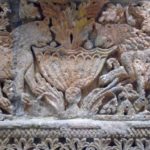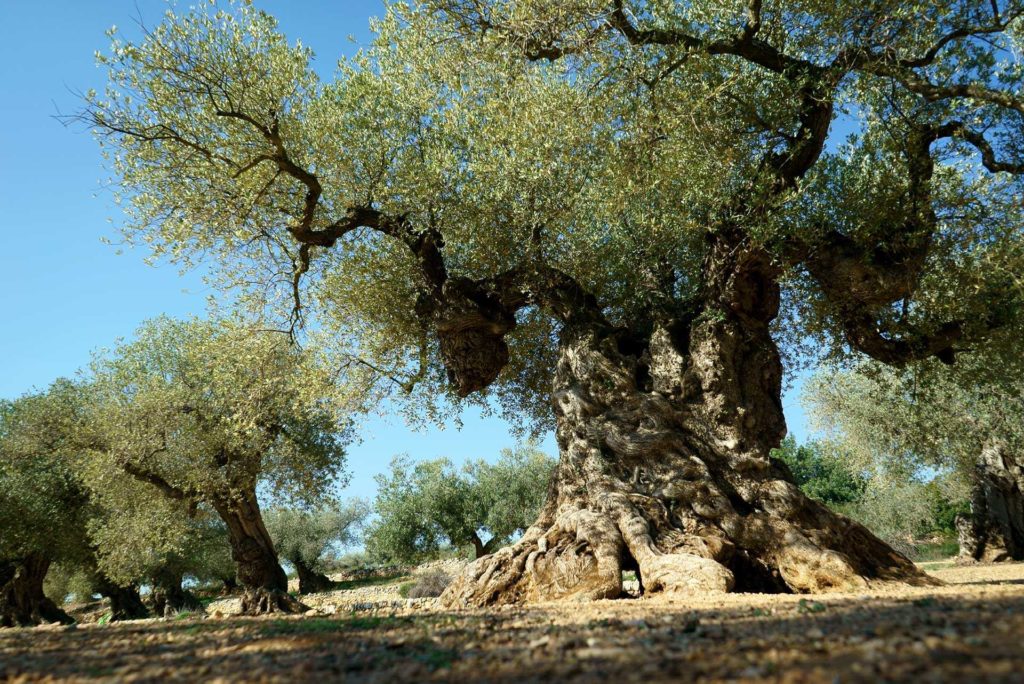
In the first part of this essay we listed some problems inherent to the historical sources for early Islam. We now turn to some more features that focus on some more substantive issues relating to the fundamental understanding, by Muslims, of the origins and nature of their faith.
A STILL LARGER problem looms related to the arrangement of the suras of the Qur’an: the verses in the current Qur’an are not arranged according to the chronological order of their revelation, but randomly, which does not help in giving a picture or a clear understanding of the sequence of events. These are not arranged in a logical time sequence that can be linked to actual events and facts affecting the Qur’anic event on the ground, so that one could gain some understanding of the causes or elements influencing the Text. This has also contributed to blurring our vision regarding the Holy Quranic Text. So here we have a complex series of problems in terms of the development of the Arabic letters, their punctuation, their formation and copying, along with all the other concomitant problems that we have highlighted.
After the nature of the historical references and the issue of the Arabic language, a third major issue in our survey is the issue of the region: Where exactly did the events of early Islam take place? The Qur’anic text does not give any co-ordinates for the places of the first message. It does not give clear names, neither for Islamic personalities nor for Arab towns. Makka only makes an appearance in the Qur’an at one place, and even here its meaning is not clear. It is found in Surat al-Fath verse 24:
And He it is Who held back their hands from you and your hands from them in the valley of Makka after He had given you victory over them; and Allah is Seeing what you do.
The meaning of this sentence is not known, a particularly important problem since it appears to be a description of a victory over another faction that took place in a region in the heart of Makka! It was not revealed as some confirmation that Mecca was the theater in which the events of the new message took place, nor as an area where the new believers took refuge to escape from the oppression of their enemies. It was a battleground between the two parties, and in which victory was granted the Muslims. From the Qur’an we also see that the first House of God was built in a city that was mentioned once in the Qur’an in the form bakka, and which no one knows whether or not this refers to it was Makka nor where it is located:
Most surely the first house appointed for men is the one at Bakka, blessed and a guidance for the nations [1]
Moreover, the cities of the Hijaz were not referred to in direct text, or with specific words. Instead the formula of ‘The Grand Mosque’ is always used. In addition, many geographical and botanical references mentioned in the Qur’an do not match the geographical center of the Hijaz and point to another geographical center that has an agricultural geographical base. All of this points to the probability of these events taking place in a terrain closer in nature to southern Syria, such as Palestine or Jordan, since figs and olives are not found in the Hijaz, but in Mediterranean environments. Another issue in clarifying the area of the occurrence of the early Islamic events, is the apparent dispute among the early Muslims over the first qibla, in that Jerusalem was considered to be the first qibla and Makka the second qibla. This event is clearly marked in the struggle of ‘Abd al-Malik bin Marwan and ‘Abdullah bin al-Zubayr over the succession, with each caliph holding to his own qibla claiming it to be the first and true one. Which, therefore was the true qibla of the Muslims at that time?
There was also no mention of the term ‘Muslims’ in the earliest Islamic era. Even the Rightly Guided Caliphs were named as ‘Commander of the Faithful’, not one of them was called the ‘Commander of the Muslims’. Was the word Muslim applied to them by the peoples over whom they gained dominion at that period, or was it a word they coined themselves? Does the word ‘Islam’ in Islamic literature refer to a specific religion, much as with the terms ‘Judaism’ or ‘Christianity’, or does it merely refer to a party of believers who preferred to hand over authority to the god of the new religion, Allah? Here we have to research and evaluate the subject seriously to solve these problems and understand them in a proper scholarly fashion.
The question that no one dares provide an answer to is this: What is Islam? Is it an independent religion? Or is it Judaism written in Arabic? Or is it an Arab understanding and perception of Judaism? Contemporary Byzantine references of the seventh century AD refer to the emergence of a prophet in western Arabia, describing him as Ishmael and describing his followers as Ishmaelites, in relation to the children of the Prophet Ishmael. We know that the Quraysh, along with other tribes in the Arabian Peninsula and according to Arab genealogists, attribute themselves to one of the Arab branches called ‘the Arabizing Arabs’, that is, to a stock of the Children of Israel or Arabic-speaking Arameans or the Arabizers descended from, or religious followers of, Ishmael within the Abrahamic branch. For there is no other Ishmael than the eldest son of Abraham; he was 11 years older than Isaac. As Easterners we know how important it is to arrange inheritance in the eastern family towards the eldest son, both in political succession and in prophecy.
And here we must examine this point closely, and link it to the Byzantine sources’ designation of the Muslims as Ishmaelites. Were the Ishmaelites a distinct sect of the Children of Israel that spoke Arabic? We do not know.

Suggested Reading
But that most important question remains; What is Islam? This is a complex and difficult question to answer. It is a question that needs a lot of study to understand the issue. But it goes without saying that Islam has a special point of view on this, the view of a third party distinct from Judaism and Christianity. It has its own point of view on events, especially the religious theology pertaining in the region at the beginning of the seventh century AD.
While Islamic sources describe the milieu in which the events took place as pagan, we can see how Islamic literature is saturated with biblical perceptions and Christian literature. It is worth noting here the overwhelming influence of the environment; contrary to how the sources describe or accuse this environment of paganism, it seems that it was an environment replete with the presence of various Jewish and Christian sects.
[1] إِنَّ أَوَّلَ بَيْتٍ وُضِعَ لِلنَّاسِ لَلَّذِي بِبَكَّةَ مُبَارَكًا وَهُدًى لِلْعَالَمِينَ Qur’an, III (Al Imran), 96.
Further reading:
G. Ostrogorsky, Storia dell’impero bizantino, Torino 1993
Main image: Mada’in Salih in northern Saudi Arabia


